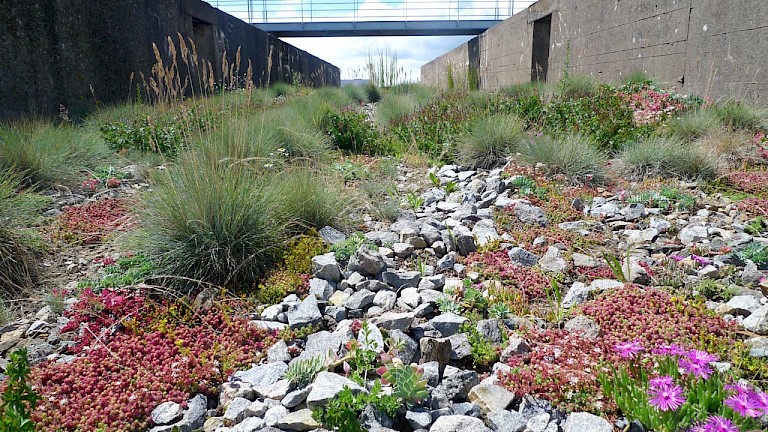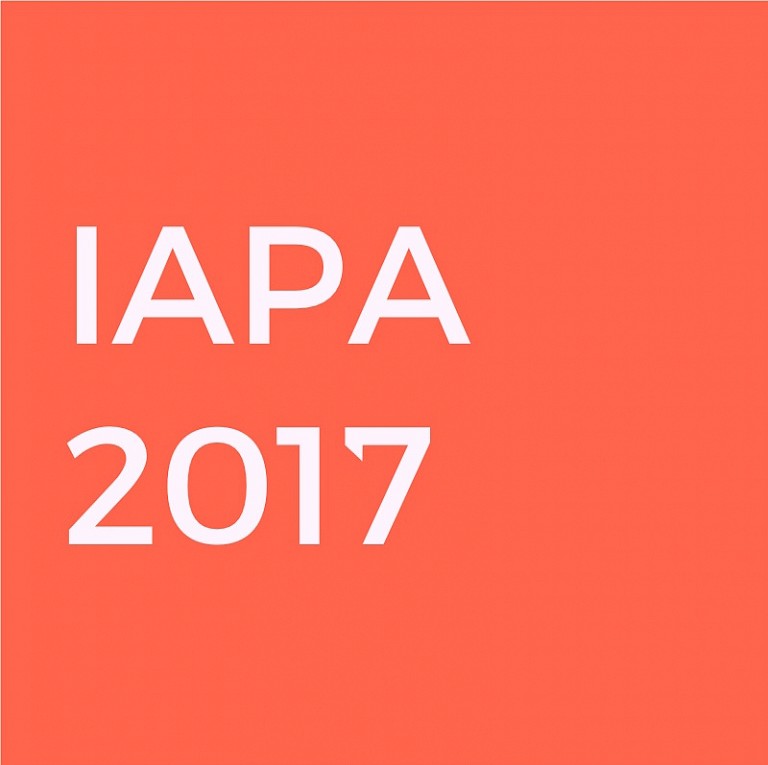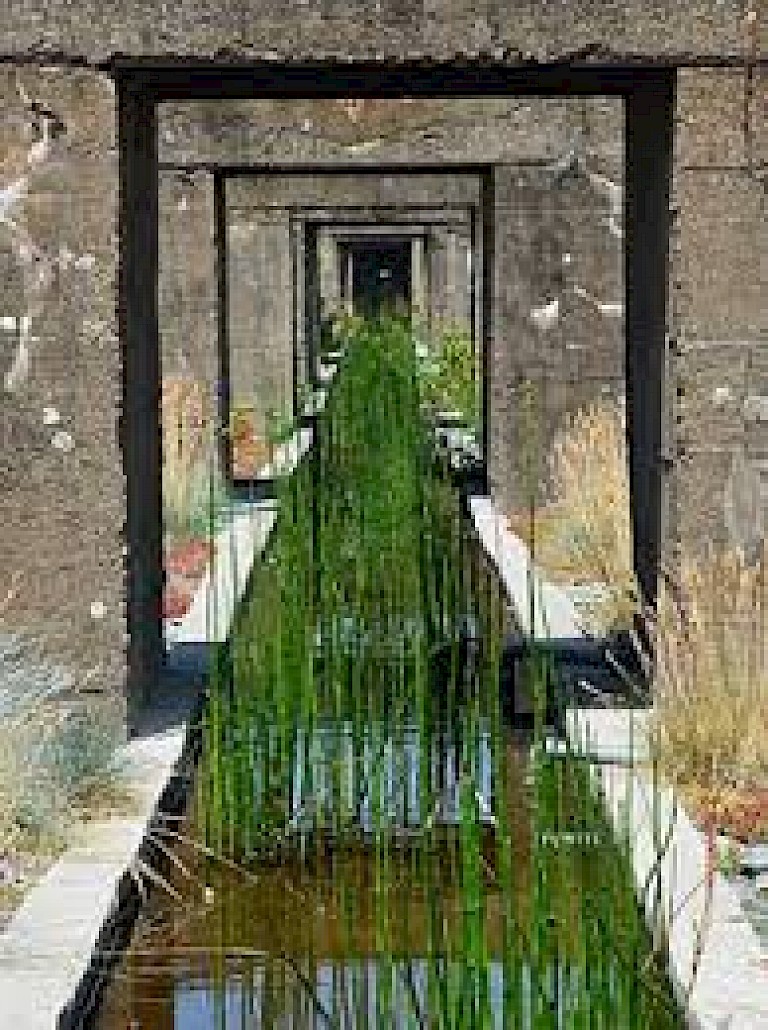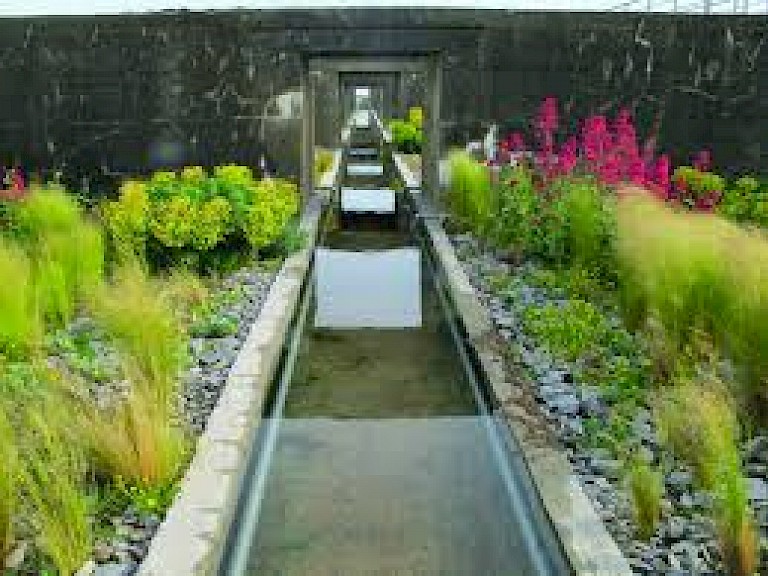



In 2012, for Le Jardin des Orpins et des Graminées (The Garden of Stonecrops and Horsetails), he uncovered rows of concrete which were then filled lengthwise with a canal of planted horsetails which the visitor encounters from a bridge giving a view of the entire base. Stonecrops and stem grass, robust plants that are emblematic of the estuary, bring vegetal life to this mineral environment. In the former submarine pit, Le Jardin des Étiquettes (The Garden of Labels), Clément added a thin layer of bedrock onto which the wind, birds, and the soles of visitors shoes will deposit seeds as they pass through. The proposal with this project, as with all the projects commissioned for Estuaire is for a continual and ongoing maintenance programme which embeds the work further in the local landscape. Twice a year, new plants will be identified planted and labelled. To complete the triptych, Clement created a ‘Third Landscape’, an undetermined fragment which designates the sum of the space left over by man to landscape evolution - to nature alone.
The term Third Landscape alludes to the Third Estate, a referral to the French political theorist Abbé Siéyès’ question ‘What is the Third Estate? The plan of this book is fairly simple. We must ask ourselves three questions.
1. What is the Third State? Everything.
2. What has it been until now in the political order? Nothing.
3. What does it want to be? Something....
and ends:-
The Third Estate embraces then all that which belongs to the nation; and all that which is not the Third Estate, cannot be regarded as being of the nation.
What is the Third Estate?
It is everything.
Estuaire was a 3-part project with public iterations in 2007, 2009 and 2012. Each iteration included commissions of temporary and permanent works which were sited along the 60km river River Loire corridor between the inland city of Nantes and the coastal city of Saint-Nazaire incorporating countryside, the city and the river leading between urbanisation and coast. Estuaire created a permanent open-air collection of 30 original artworks, which are now owned by the local municipal tourism body Le Voyage de Nantes. The intention was not to create a sculpture park but a collection of works sited within communities living and working in the area.
The artistic programme was much more than the traditional contemporary art ‘bienniale’, with a political agenda to create a Greater Nantes Saint-Nazaire metropolitan area. The closing of each Estuaire programme marked the beginning of the life of the collection. A 3-year gap occurred in programming between 2009 and 2012 to allow time to establish Le Voyage de Nantes (Journey to Nantes), a new cultural initiative to lead tourism policy through cultural innovation, rather than tourism leading culture. The organisation now proposes to create a new public art programme each summer with the collection at the centre. The artist was selected through invitation by the curator. There was no competitive selection process. The invitation was for the artist to visit and identify a site with the curator and make a proposal. The curator made no restrictions on the artist who was permitted full artistic freedom to generate a proposal. A fee was made for the proposal which would generate a drawing from which the commissioner would draw up a full works schedule to realise the project, including the costs of maintenance for one-year. This was because an earlier project had generated a maintenance budget which was unsustainable. The total budget for each iteration of Estuaire was in the region of €7.5m to commission up to 20 temporary installations and 10 permanent works. 75% of the budget was re-invested in the local skills and labour economy to create the artworks including fabrication, promotion and audience delivery. The Estuaire programme attracted an international, national and local audience with international media coverage which has resulted in the permanent projects being listed in guide books and publications where you would not usually come across contemporary art. The artist retains intellectual property of the work, a substantial authorship fee was paid to the artist, with no final display duration agreed. Le Voyage du Nantes owns the work.
All copyright belongs to Shanghai Academy of Fine Arts, Shanghai University.



